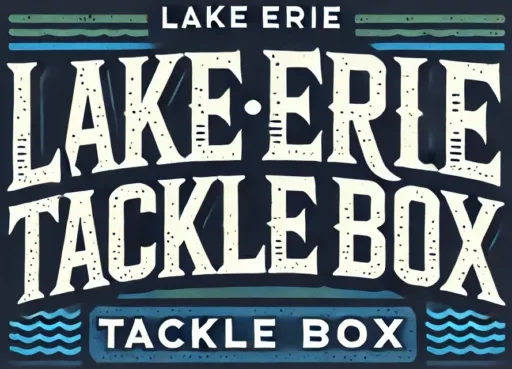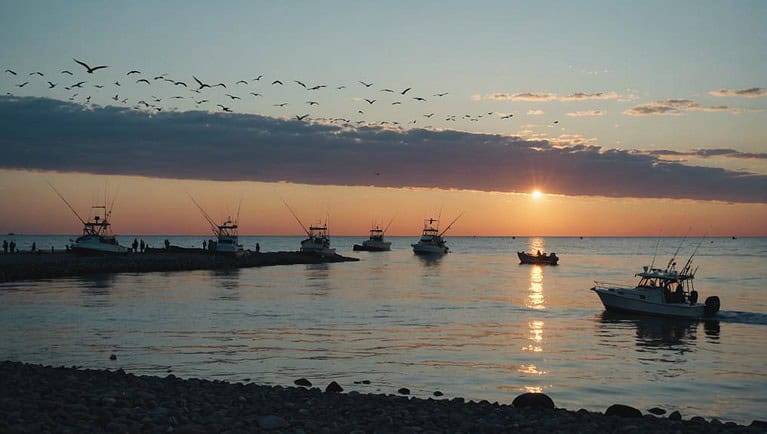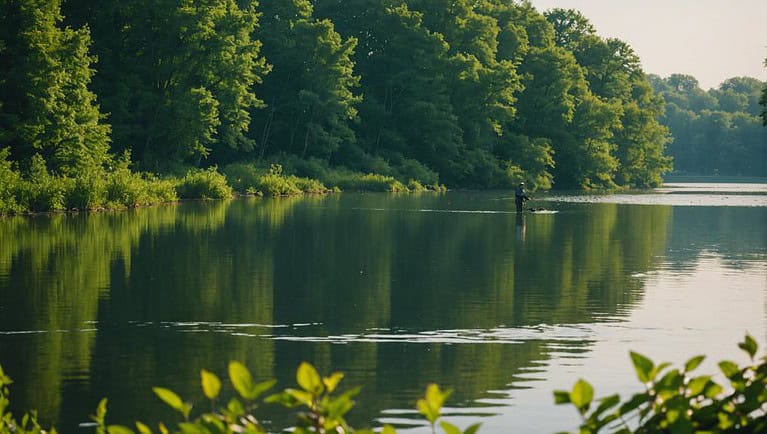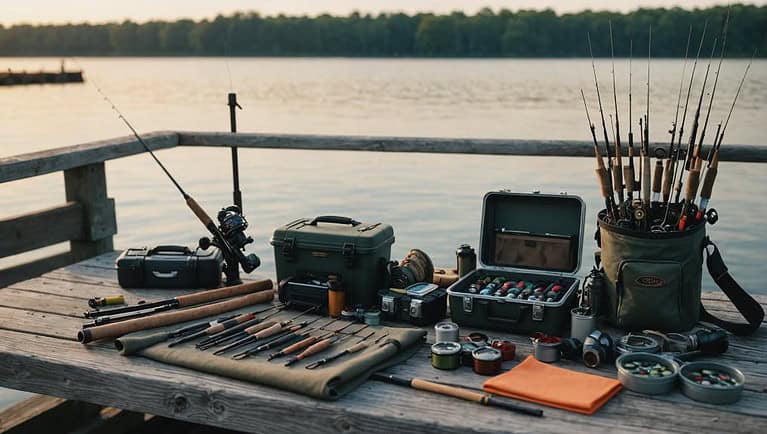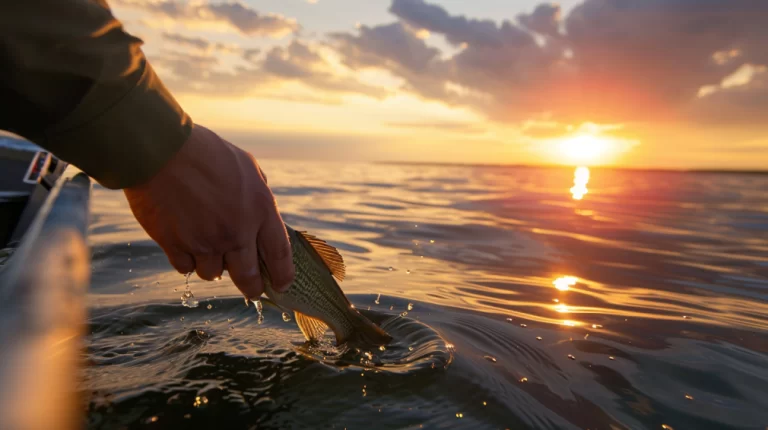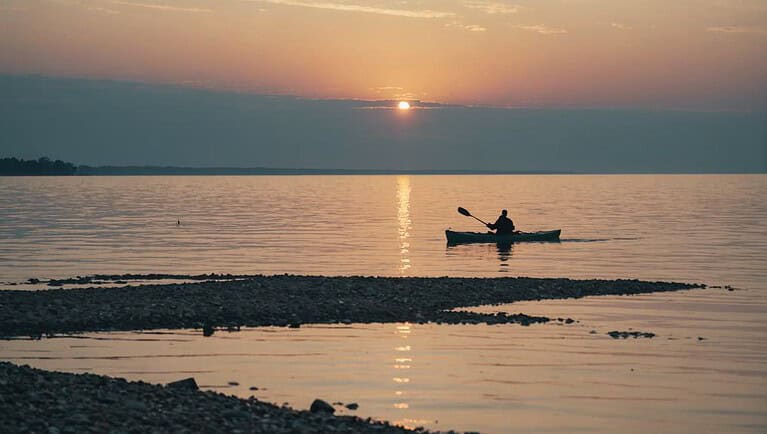Lake Erie’s Tributaries: Fishing Opportunities Beyond the Lake
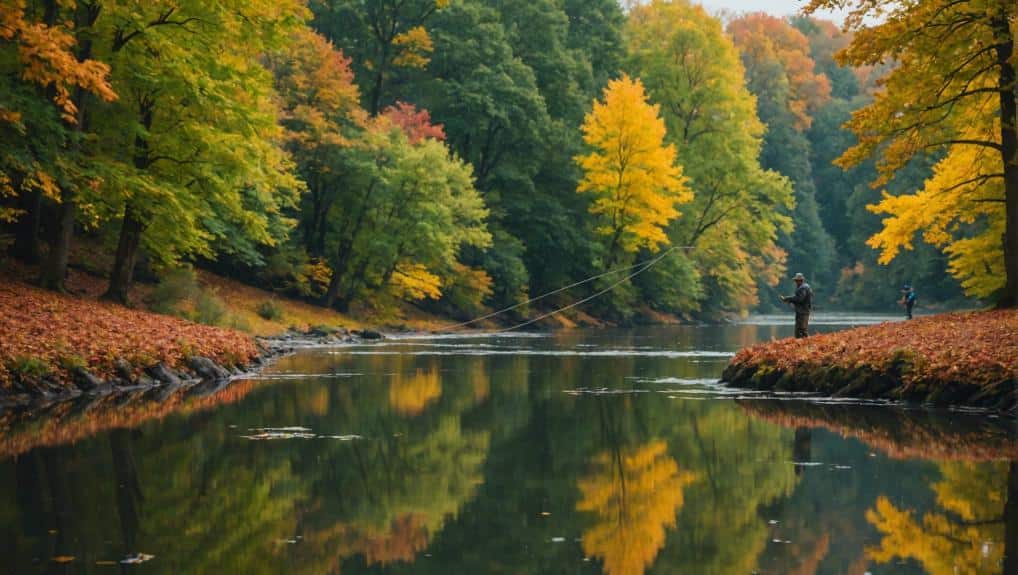
You’ll find abundant fishing opportunities in Lake Erie’s tributaries like Cattaraugus Creek, Conneaut Creek, and Elk Creek. Target walleye, rainbow trout, and smallmouth bass, especially mid-June onwards. Fall and winter seasons are prime, with steelhead runs creating thrilling catches. Use fly fishing gear with a 9-foot leader or a 7-foot medium action rod for spinning. Don’t forget, Lake Erie permits are required, and local guides can enhance your experience with insider tips. For those keen to discover each unique spot and gear themselves up with the best strategies, the adventure just begins here.
Main Points
- Lake Erie tributaries offer diverse fishing opportunities for species like walleye, rainbow trout, and smallmouth bass.
- Prime fishing seasons extend from fall to early spring, with peak steelhead fishing from October to April.
- Hiring a local fishing guide can enhance your experience with expert insights and personalized guidance.
- Specific regulations and licensing, including Lake Erie permits, are required to fish in these tributaries.
- Fly and spinning gear recommendations include a 6-8 weight fly rod and a 7-foot medium action spinning rod.
Top Tributaries to Explore
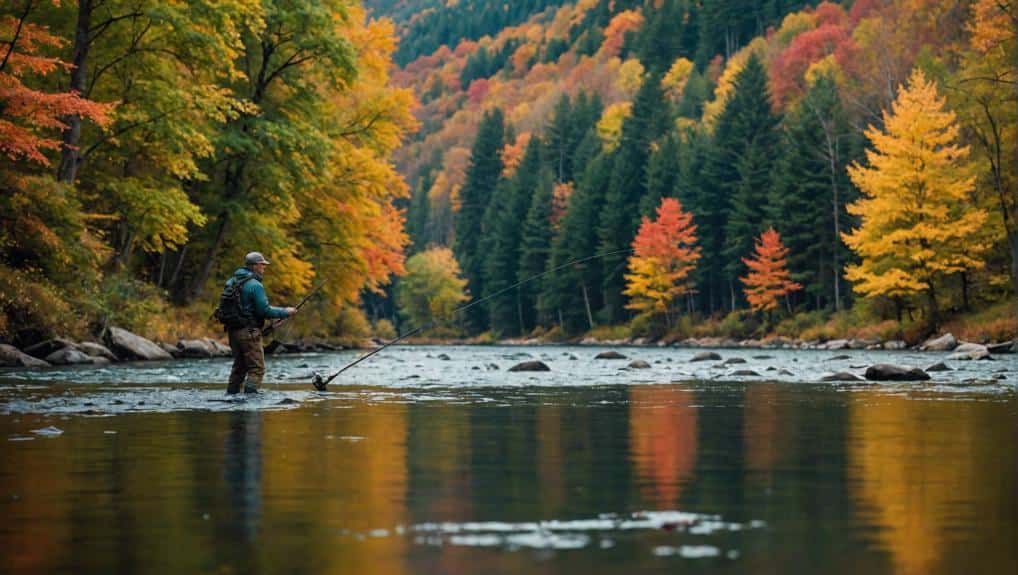
When you’re looking to cast your line beyond Lake Erie, Cattaraugus Creek in Springville, N.Y. stands out as a top tributary with its abundant steelhead population. But it’s not the only gem in the area. You’ll find Trout Run, Conneaut Creek, Elk Creek, and Godfrey Run to be excellent spots as well. These tributaries are especially popular in Erie County, offering diverse fishing opportunities.
Crooked Creek and Raccoon Creek also provide fantastic fishing experiences. Located near Presque Isle Bay, these creeks are ideal for anglers seeking a quiet yet rewarding day on the water. The variety of these tributaries ensures that you’ll always have a new spot to explore, even when conditions on the main rivers aren’t ideal.
Night fishing is another exciting option, particularly in these smaller creeks. The quiet, serene environment of night fishing can offer a unique challenge and a different way to connect with nature. Consider hiring a local guide to enhance your experience and provide insights into the best techniques and spots.
Accommodations in nearby towns like Springville, Silver Creek, and Ellicottville make it easy to plan an extended trip and fully enjoy these top tributaries.
Popular Fish Species
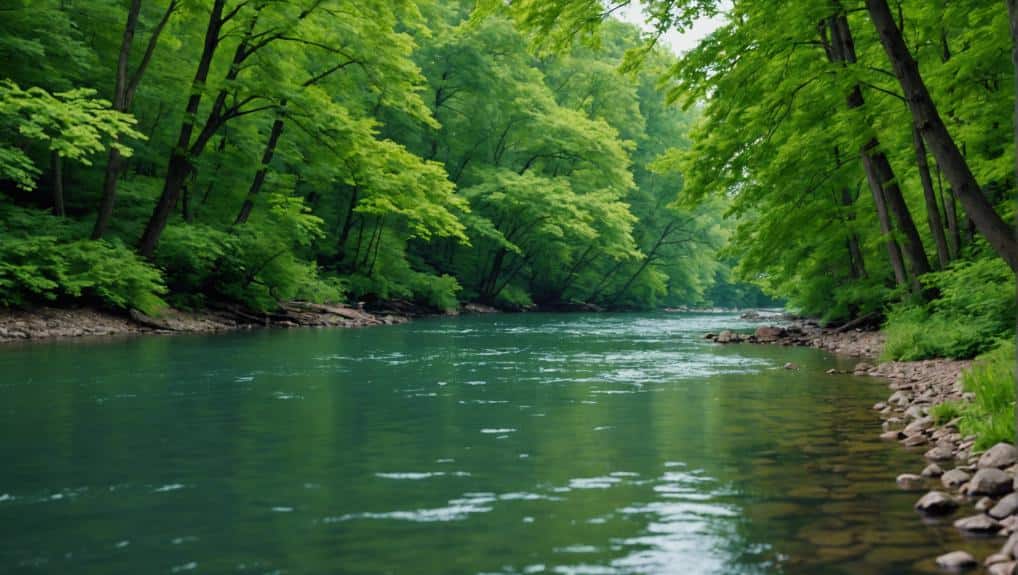
Lake Erie’s tributaries are teeming with a variety of popular fish species that offer anglers an exciting and diverse fishing experience. You’ll find an abundance of Walleye and Yellow Perch, particularly during the summer months when catch rates are high. With over 150 million Walleye populating the lake, your chances of landing one are excellent.
Steelhead enthusiasts will be thrilled with Steelhead Alley, a hotspot for big Rainbow Trout. These tributaries also host plenty of Brown Trout and Lake Trout, making the waters a prime location for trout fishing. The tributaries attract Smallmouth Bass as well, which are abundant and officially recognized as big Bass waters. Mid-June onwards is the ideal time to target these robust fighters.
If you’re into salmon fishing, you won’t be disappointed. Chinook Salmon and Coho Salmon are common in these waters, providing productive fishing opportunities during spring and fall. The Coho Salmon often share habitats with Steelhead, adding to the diversity of your angling experience.
Seasonal Fishing Tips
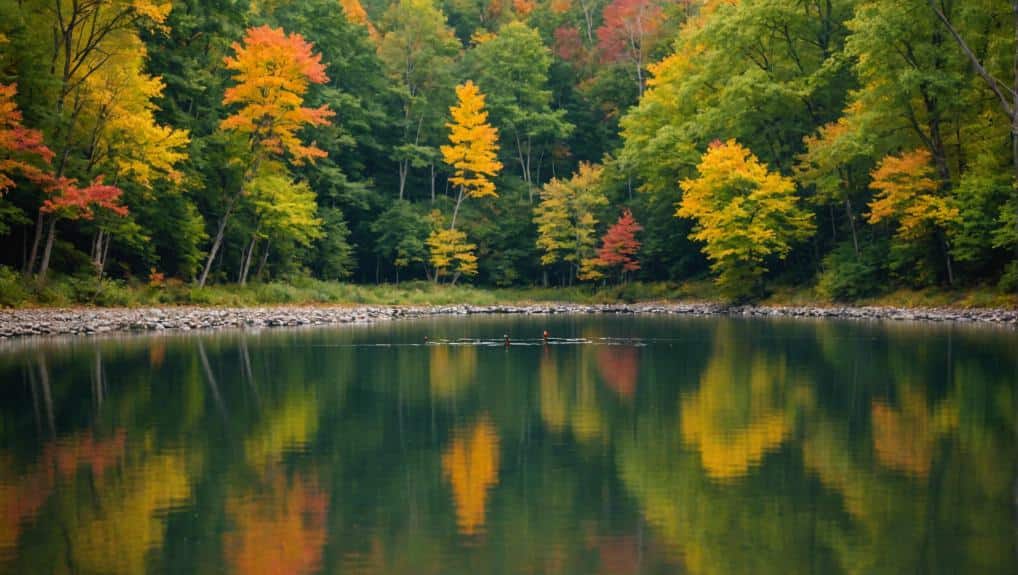
Seasonal fishing in Lake Erie’s tributaries offers unique opportunities year-round. You’ll want to adjust your gear and bait based on the prime fishing seasons.
For example, using strike indicators for Rainbow Trout in spring and fall or planer boards for Walleye in summer.
Ice fishing in winter opens up great chances for Yellow Perch, Walleye, and Crappie, making every season a potential fishing adventure.
Prime Fishing Seasons
Prime fishing seasons for Lake Erie tributaries generally span from fall to early spring, aligning perfectly with the steelhead stocking program. During these months, you’ll find the most significant fishing opportunities as steelhead begin their ascent into the tributaries. From October through April, these fish move in waves, creating ample chances for anglers to land a catch.
Fall kicks off the prime season when steelhead start returning to the Lake Erie tributaries. As the waters cool, these fish become more active, offering excellent fishing conditions. The winter months, though colder, are also fruitful. Steelhead remain plentiful and can be caught in good numbers, especially after the DEC stocking program releases over 230,000 steelhead annually.
During the spawning season, male steelhead become particularly territorial and aggressive, making them more likely to strike. This behavior enhances your odds of hooking one. The combination of their increased activity and the stocking efforts ensures a robust population, providing consistent fishing opportunities throughout the season.
Gear and Bait Preferences
For successful fishing in Lake Erie tributaries, you’ll want to focus on using the right gear and bait, adjusted to the seasonal conditions. Here’s how you can maximize your chances, especially when targeting steelhead and trout.
In the fall and winter, streamers and wooly buggers in white, olive, black, and yellow are highly effective. Drifting egg patterns and large nymphs are top bait choices for enticing trout and steelhead. Your gear preferences should include a 6- to 8-weight outfit paired with a 9-foot, 1x tapered leader and fluorocarbon tippet. This setup provides the strength and flexibility needed for these waters.
Adjusting the strike indicator depth based on the current rate and weight is important. An effective technique is to lift the rod on the take when using streamers to make sure you hook the fish properly.
Here’s a quick guide to remember:
- Bait Choices: Use streamers, wooly buggers, egg patterns, and large nymphs.
- Gear Preferences: Opt for a 6- to 8-weight outfit with a 9-foot, 1x tapered leader.
- Effective Techniques: Adjust the strike indicator depth based on current rate and weight.
- Hooking Fish: Lift the rod on the take with streamers.
Follow these tips, and you’ll be well on your way to a successful fishing experience in Lake Erie’s tributaries.
Required Fishing Gear
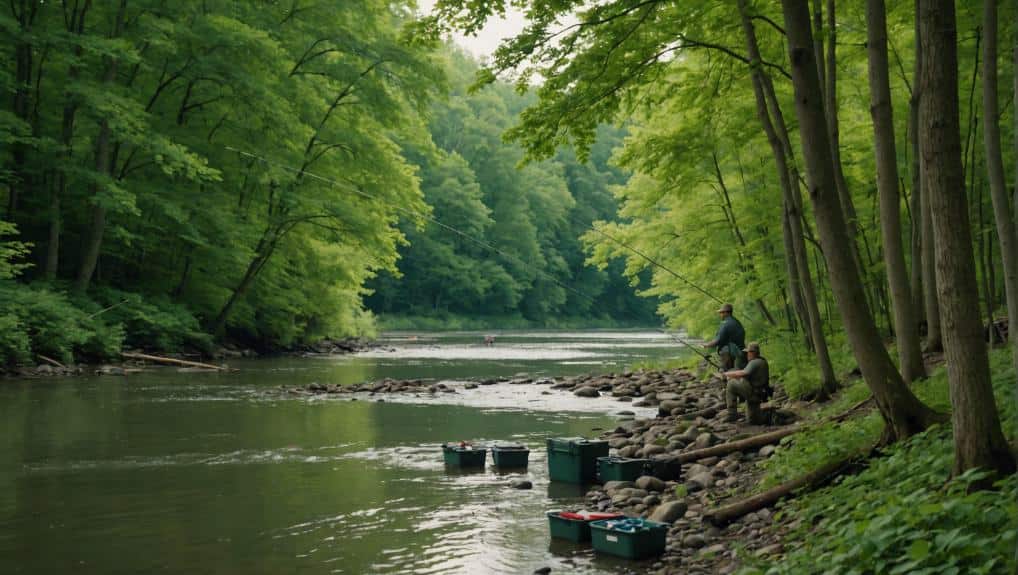
To maximize your fishing experience in Lake Erie’s tributaries, it’s essential to equip yourself with the right gear tailored for both fly fishing and spinning. For fly fishing, a 6- to 8-weight outfit with a 9-foot, 1x tapered leader and fluorocarbon tippet is highly recommended.
This setup will give you the strength and flexibility needed to handle the powerful steelhead that inhabit these waters. Don’t forget to adjust your strike indicator depth based on the current rate and weight to improve your chances of success.
When it comes to spinning gear, opt for a 7-foot medium action rod paired with a 4000 size spinning reel. This combination is effective for catching steelhead and other species found in Lake Erie’s tributaries. Use 8- to 12-pound test monofilament as your main line, complemented by a 20-pound test fluorocarbon leader.
This setup provides the right balance of strength and invisibility, ensuring that fish are less likely to detect your line. Lastly, remember to lift the rod on the take when using streamers to effectively hook fish while fly fishing. This simple action can significantly increase your catch rate.
Regulations and Licensing
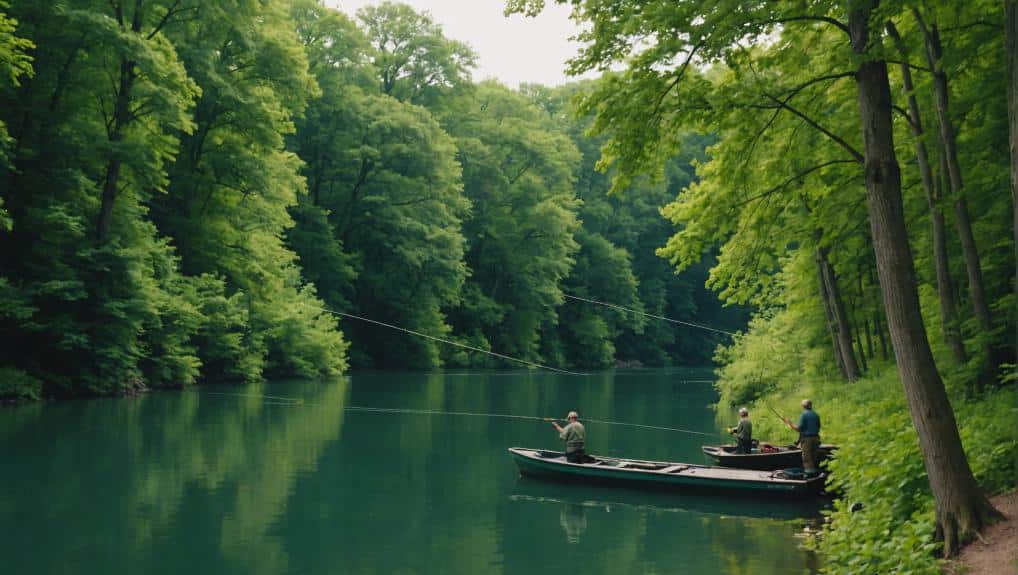
Understanding the regulations and licensing requirements is vital for a successful and lawful fishing trip in Lake Erie’s tributaries. The Great Lakes and Tributaries Special Regulations apply to the entire Lake Erie region, guaranteeing sustainable fishing practices.
Here’s what you need to know:
- Lake Erie Permit: You’ll need a Lake Erie permit to fish in Lake Erie, Presque Isle Bay, and their tributaries. This permit is essential unless you’re fishing in specific inland ponds.
- Gear Restrictions: Different periods come with specific gear restrictions. For example, sinking lines and metal leaders might be prohibited during certain months to safeguard fish populations.
- Special Regulations: Areas like Conneaut Creek, Elk Creek, and Walnut Creek have unique rules. Pay close attention to these to avoid fines and ensure you’re fishing responsibly.
- Nursery Waters: Designated Nursery Waters such as Trout Run, Godfrey Run, and Orchard Beach Run have additional protections to nurture young fish. Fishing here is subject to stricter rules.
Always check current fishing conditions and adhere to all regulations to preserve the ecosystem. By staying informed and compliant, you contribute to a healthier environment and enjoy a safe fishing experience in Lake Erie’s beautiful tributaries.
Local Fishing Guides

Hiring a local fishing guide like Elvy Foster from Around the Bend Guiding can greatly enhance your fishing adventure on Lake Erie’s tributaries. Local fishing guides bring a wealth of knowledge about the area, including the best fishing techniques and hotspots. They can navigate you through the regulations, ensuring that your fishing trip adheres to all legal requirements. This expertise can be especially valuable when you’re targeting specific fish species.
One of the main advantages of hiring a guide is the personalized experience they offer. Whether you’re a novice or an experienced angler, guides like Elvy Foster tailor their advice and support to your skill level and preferences, making your trip both enjoyable and productive. They know the most suitable times to fish and can recommend the best gear to use, greatly increasing your chances of a successful outing.
Guides also provide unique insights into the local environment, which can be essential for understanding the behavior and habitats of different fish species. By utilizing a local guide, you not only improve your fishing success but also gain a deeper appreciation for the rich fishing opportunities that Lake Erie’s tributaries have to offer.
Conclusion
As you gear up to explore Lake Erie’s tributaries, imagine the thrill of casting your line into waters teeming with prized fish. Will you land that elusive steelhead or perhaps a trophy-sized walleye? With the right gear, seasonal insights, and adherence to regulations, unforgettable fishing adventures await.
But here’s the catch—these waters hold secrets that only the most dedicated anglers uncover. Are you ready to discover what lies beneath the surface? Only one way to find out.
